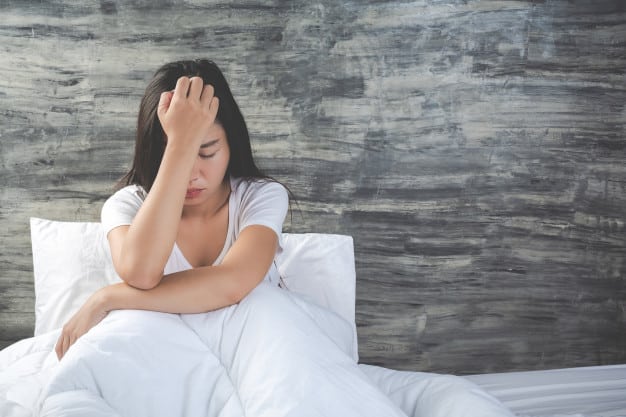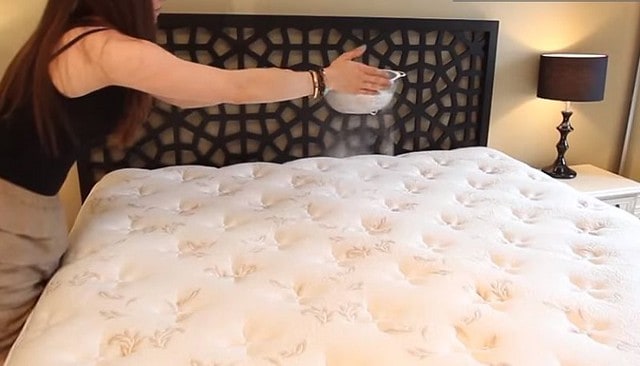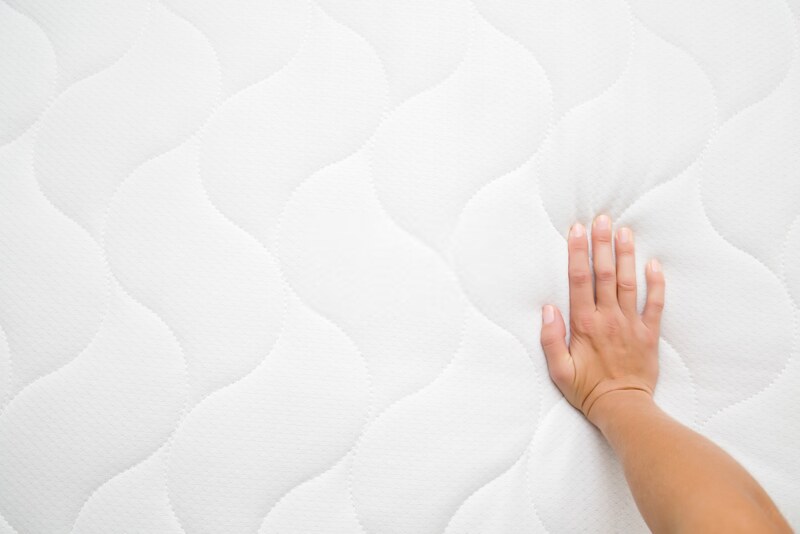Mold in Mattress: Symptoms and Solutions
Disclaimer: As an Amazon Associate I earn from qualifying purchases.
Mold in mattress is a major issue that many people don't know about. In this article, we will go over the symptoms of mold in mattress and how to remove mold from a mattress naturally without using harsh chemicals.
Mold can be found anywhere indoors or outdoors, but when it's found on bedding like mattresses, pillows or comforters, it can lead to respiratory problems and other health issues.
Mold in Mattress Symptoms
Let's start with the most common symptoms of mold in a mattress:
1. Your Respiratory Symptoms Get Worse During The Night
Respiratory symptoms, such as coughing, sneezing and trouble breathing, are sometimes caused by a moldy mattress. You may also develop more serious symptoms, such as asthma or wheezing, when you try to sleep on your mattress.
2. You May Develop a Rash When in Contact with Your Mattress
If you're sleeping on a moldy mattress, you can develop a contact rash. If you sleep on a latex mattress, it could be latex allergy, so it's important to get tested first. If you're not allergic to latex or you test negative for latex allergy, the cause of your rash may be a moldy mattress.
3. Your Existing Skin Conditions May Have Worsened
If you have skin conditions, such as eczema, psoriasis or dermatitis and are sleeping on a moldy mattress, your symptoms may get worse. If you notice that your prescribed treatments are not effective anymore, the course could be mold-related.

4. You're Not Getting Quality Sleep
You may feel that you are not getting a good night's sleep when you wake up tired, with your joints and muscles feeling stiff. This is because mold in mattresses can trigger allergies or asthma, which may make breathing difficult while you're asleep.
In addition to this, the particles from the mold release toxins into the air that accumulates on furniture and bedding, which could then be inhaled and cause unpleasant symptoms, such as tiredness and headaches.
5. You Often Get Sick
If you often get sick after spending time in your bedroom, it may be that the mold is triggering allergies, colds and ear infections. If these infections seem difficult to explain, mold in your mattress could be the culprit.
6. You Experience Flu-Like Symptoms In Your Bedroom
Mold in mattresses can trigger headaches, shortness of breath or anxiety. You may also notice that you feel a tightness in your chest and experience flu-like symptoms when you enter the room.
7. You May See Black or Brown Spots on the Mattress
Another sign of mold in your mattress is spotting. These are likely dark spots that are visible on the surface and often in clusters, but they will sometimes be larger patches too. This is usually due to mold spores spreading from a hidden area of moisture or through dust mites seeking out food sources nearby.
8. You May Notice an Unpleasant Smell
The smell of a mattress can indicate the presence of mold. Mold thrives on damp surfaces and releases an odor that starts out as sweet but eventually turns foul.
The foul smells might be from growing spores, insects or liquids breaking down into gases thanks to bacterial activity. Whatever the cause, moldy odors should not exist in mattresses.
Disclaimer: As an Amazon Associate I earn from qualifying purchases.
9. It Seems Impossible to Mask or Get Rid of The Smell
You may have noticed that the more you sweat in your bed and the longer it has been since you last vacuumed, there is a pungent smell that can't be covered up by clean sheets or strong textile deodorizers.
The smell of mold is emanating from your mattress and needs to be dealt with before it takes over every other surface in your home.
10. The Color of The Mattress Is Changing Due to Mold
You may notice that your mattress is taking on an unusual color, such as green or black. This can be a sign of mold in mattresses because it's one way that the spores are spreading to other surfaces and eventually throughout the home.
Your mattress surface can also develop discoloration that looks like water stains, but that are actually mold spores.
If vinegar or enzymatic cleaners do not remove the discolored area quickly, it’s a good chance that mold is present. If the problem is reduced dramatically after using bleach or hydrogen peroxide, it may be mold.
If the discolored spots are not limited to only one small spot on your mattress and they change color from yellowish or tan to black, then you can be sure it is mold.



11. You Find Bugs in Your Mattress
A moldy mattress may attract bugs like ants or critters. These pests can be found near or inside the mattress, in dark and damp places where mold thrives.
The reason for this is that insects are attracted to moist environments as they feed on rotting material. You may also find termites and spiders near your bed, as they are attracted to the moist environment and other bugs.
Read More: Find the best non toxic mattress for healthy sleep
12. Your Mattress Always Seems Damp
A moldy mattress is a breeding ground for bacteria and microorganisms, which will make the mattress wet or damp. If you seem unable to properly dry out your mattress, it is more than likely covered in mold.
Mold will grow rapidly if there's high humidity and dampness, such as when a mattress constantly sits on wet carpet or springs are broken.
If you often sweat while sleeping, this may cause your mattress to be moist for long periods of time, which can lead to the growth of mold. It can also to your child's mattress if he or she wets the bed often.
You can solve this problem by getting a mattress protector and dehumidifier to keep the moisture out of your bedroom's air.
13. You Find Mold in Other Parts of Your Bedroom
Mold is found in dark, moist areas of houses and can be a problem as mold spores are spread by the air. Molds in other parts of the bedroom may be due to mold growing in the mattress or fueled by another source.
First, make sure that there’s not a leak in the bathroom sink or an air leak by the window, which is fueling mold growth on the other side of the wall.
When you check for mold in your mattress, make sure to don't overlook the area under carpets. Mold on carpets can easily spread and will be rather difficult to remove from bed covers without chemicals.
How to Remove Mold From Mattress Naturally?
Mold on a mattress is caused by excessive humidity. This can be due to humid air, or from water seeping into the mattress and remaining there for an extended period of time.
Mold thrives in moist environments, so if your environment has above-average levels of moisture, then it may likely have mold spores present too. In this part of the article, we'll tell you how to get rid of mold in the mattress using natural, non toxic solutions:



1. Hydrogen Peroxide for Mattress Mold
The key point is that you should never mix bleach into hydrogen peroxide as this will cause toxic fumes, which can be potentially fatal if inhaled in large quantities.
2. Use Essential Oils to Kill Mildew in Mattress
Add a few drops of essential oils such as lavender, tea tree or lemon to a spray bottle of water. Spray the mattress with the mixture and leave it for 30 minutes before wiping off using a paper towel.
There is no need to rinse as there will be some leftover residue from the essential oil, which will kill any remaining bacteria or fungus present. Repeat this process until you have cleaned all visible areas infected by mold in your mattress cover, mattress pad or topper (if applicable).
Lemon oil is one of the best essential oils you can use when dealing with mold as it has powerful antibacterial properties that will quickly kill any mold present.
3. Get Rid of Mold in The Mattress with Baking Soda
Baking soda is a natural deodorizer and mold remover. Leave the baking soda on your mattress for about an hour before vacuuming it up to remove any remaining particles of mold or mildew.
Remember when using this method that if you vacuum too soon after applying the baking soda, then all those great benefits will be lost as they are sucked out with the vacuum cleaner!



4. Use Vinegar to Kill Mold in The Mattress
The vinegar can also help in removing some types of odors but does not work well on fungi like mold - so remember to combine both methods (vinegar and baking powder) if need be.
If vinegar is combined with water or lemon juice at around 50% concentration mixture, then you should have enough power to kill off most molds.
5. Fix a Moldy Mattress with Lemon
Lemon is very acidic and has a high concentration of citric acid that can help kill off most types of mold. The first thing to do would be to put lemon peels on the affected areas or spray with diluted lemon juice from a bottle.
If you happen to have any lemons laying around, cut them in half and squeeze out as much juice as possible, then apply it directly onto the area where there's been an accumulation of moisture - this will not only soak up some water but also release more potent citrus oils into the air which may help resolve odors too (if they're present).
6. Use Rubbing Alcohol on a Moldy Mattress
You can use rubbing alcohol to help remove mold from a mattress:
7. Dry Your Mattress in The Sun
If you're trying to avoid using chemicals and want a natural option, then try drying your mattress in the sun. You will need to flip it over every few hours so that both sides can dry evenly - this is important because moisture often accumulates on one side of the bed more than another. It may also be necessary to rotate it 180 degrees so that the mattress can dry evenly on both sides.
Airing your bed out in the sun will help you kill off mold naturally and is an excellent way to disinfect it too - this means any bacteria, fungi or other microbes which might be present are killed quickly as well.
The UV rays from the sun also act as a natural cleaning agent because they break down organic matter like dirt, dust mites and microorganisms. This helps prevent contamination of other surfaces nearby by reducing bacterial growth.
Beware that this method should not be used with natural latex mattresses because UV rays can cause them to dry out and become brittle.
How Long Does It Take for Mold to Grow in a Mattress?
As a general rule of thumb, the amount of time it takes for mold to grow on an object is determined by how often that object is exposed to moisture. The more frequently moisture comes in contact with the surface, the faster mold will grow.
Mold can grow in a mattress within three days if moisture is constantly seeping into it. This usually happens when the cover of your mattress isn't waterproof or has holes.
If you have found that mold has grown on any of the materials inside your bed, remove them immediately and replace them with new ones before re-closing.



How to Prevent Mold from Growing on My Mattress?
Since mold is attracted to moisture, it's important that you keep all parts of your mattress dry.
Read More: How to fix a sagging mattress?
Conclusion
A moldy mattress can be dangerous for your health. It's important to get rid of the mold as soon as possible once you find it. Otherwise, your health problems may worsen and have long-term effects on your physical and mental well-being.
This article has discussed a few ways in which you can remove mold from a mattress naturally. We hope that by reading this article, you will be able to make an informed decision about how best to solve the problem!

